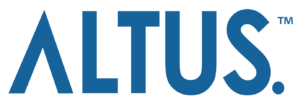Guest post by Hope Druckenmiller
May is Foster Care Awareness Month, and with over 391,000 children and youth in foster care across the country, the needs are many. But so are the opportunities. And there are so many ways for you to help! Beyond becoming a foster parent (though consider that if you can), there are many ways to help youth and families in your community that maybe you hadn’t thought about before. To get you started, explore these resources that will help you learn how you can make a difference this Foster Care Awareness Month (and every month of the year).
From Engage Together, the My Role: Community Members page on our website has a downloadable Community Toolkit to help you learn about the connection between human trafficking and foster care and how you and your community members are uniquely engaged to make a difference, right where you are, with the skills, passions, and interests you already possess.
The AFRJ Student Council provides a downloadable Monthly Action Kit for Foster Care Awareness Month to help you and your student learn, mobilize, and take action. Resources include facts, statistics, and stories from youth who have been in foster care. Actionable steps you and your student can take include reading legislative recommendations, using hashtags on social media, or donating to programs that offer items to foster care families.
We also recommend the Justice U Essential Knowledge for Addressing the Commercial Sexual Exploitation of Children (CSEC) Series. This is a 3-part training series that equips critical roles and professions with skills to prevent and address CSEC. The course was created to better equip those interacting with, caring for, and working with children and youth in foster care, including educators, group home professionals, foster care and adoptive families, juvenile justice professionals, community advocates, and others.
Children’s Bureau, an office of the Administration for Children & Families, provides key facts and statistics, tip sheets, helpful highlights, and other resources, as well as information about the connections between child welfare and mental health awareness, both of which are highlighted in the month of May.
The Kids Count Data Center, provided by The Annie E. Casey Foundation, provides current data and statistics on children, youth, and families, including demographics, economic well-being, education, health, and more. You can view data for the nation or your individual state.
The Congressional Coalition on Adoption Institute (CCAI) is a nonprofit, nonpartisan organization whose programs provide members of Congress and policymakers with the knowledge they need to make a difference on behalf of children in need. Visit their website to learn more about their programs, including Foster Youth Internships and Angels in Adoption.
Wait No More, by Focus on the Family, is a child-focused, family-founded foster and adoption ministry that provides a whole-family approach to all sides of the foster care and adoptive processes. Visit their website to view videos, interviews, and other resources created specifically for foster and adoptive families.
If you are looking to be connected with foster families in your community, connect with your local department of social services and share your goal to come alongside youth and families to help however you can. You can also contact your local CASA (Court Appointed Special Advocate) office to learn how you can support youth in care in your city. And find out if your community is connected with Care Portal so you can be alerted to tangible and practical needs you can meet.
These are just a few ways we suggest you can become part of the amazing journey of caring for kids and families in your community. We hope this blog helps illuminate ways that you can move from awareness to action today. And if you need more resources or ideas, reach out to us today.

